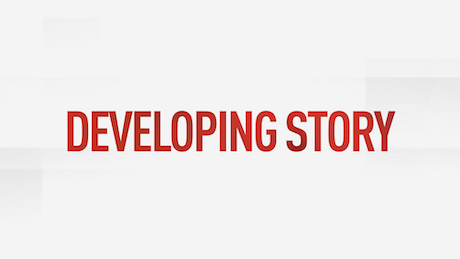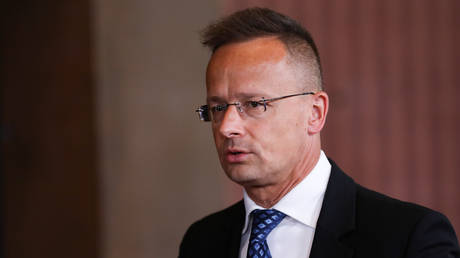What Is an Employee Development Plan Template and How Can It Benefit Your Team?

An Employee Development Plan (EDP) template is a structured tool that helps define career objectives and the skills needed to achieve them. By aligning individual goals with organizational aims, it promotes a collaborative environment where employees and managers can engage in meaningful discussions about growth. This template not just clarifies expectations but additionally outlines the resources available for development. Comprehending how to effectively implement an EDP can greatly impact your team’s performance and satisfaction.
Key Takeaways

- An Employee Development Plan (EDP) template outlines structured steps for individual career growth and skill development aligned with organizational goals.
- It fosters employee engagement by promoting collaboration between managers and employees in setting and achieving development objectives.
- Regular updates to the EDP ensure progress tracking and adaptability to evolving career aspirations, enhancing accountability and transparency.
- Companies utilizing EDPs experience improved retention rates and profitability, as engaged employees are more likely to stay and perform effectively.
- The template supports personalized learning paths and emphasizes soft skills development, which are crucial for enhancing workplace culture and employee satisfaction.
Understanding Employee Development Plans

When you think about career growth, an Employee Development Plan (EDP) serves as a crucial tool for outlining the actionable steps you need to achieve your professional objectives.
An EDP is a strategic framework that guides you through skill development, certifications, and other career milestones. Typically, it’s developed collaboratively with your manager to guarantee alignment with both your personal ambitions and your organization’s needs.
Regular updates to your employee development plan template are important, as they help track your progress and adapt to changing career goals. Using an individual development plan template in Word can streamline this process, allowing for clear documentation and easy adjustments over time.
In the end, EDPs contribute to a more skilled workforce and improved organizational performance.
The Purpose of an Employee Development Plan Template

An Employee Development Plan (EDP) template serves a vital purpose by aligning individual employee goals with organizational objectives, ensuring both parties understand expectations.
It improves employee engagement by nurturing collaboration between managers and employees, which can lead to increased job satisfaction and retention.
Furthermore, the template allows for tracking progress and accountability, helping employees monitor their development and adjust as needed to meet evolving business needs.
Aligning Goals and Objectives
Aligning individual goals with organizational objectives is essential for the success of both employees and the company.
An employee development plan template serves as a structured framework that helps you and your manager identify skill development needs that align with business goals. By collaborating through this template, you can clarify your career aspirations as you ensure they reflect organizational priorities.
This alignment not only improves your growth but also increases overall workforce capability. Furthermore, a career development plan template promotes transparency and accountability, allowing for regular assessments of your progress.
In the end, utilizing these templates can lead to improved employee retention, signaling the organization’s commitment to investing in your career advancement.
Enhancing Employee Engagement
Employee engagement significantly improves when you utilize an Employee Development Plan (EDP) template, as it provides a clear framework for setting career goals and tracking progress.
By aligning personal aspirations with organizational objectives, you create a sense of ownership over your career path. Companies that implement these plans typically see an 11% increase in profitability, showcasing a direct link between engaged employees and financial success.
When employees feel invested in their growth through a professional development plan template, they contribute actively to productivity and innovation. Regularly updating EDPs encourages commitment and belonging, reducing turnover rates.
Organizations focusing on employee development are twice as likely to retain their workforce, emphasizing the template’s role in enhancing engagement and loyalty.
Tracking Progress and Accountability
Tracking progress and accountability in the context of an Employee Development Plan (EDP) template is crucial for both employees and managers to guarantee that development goals are met effectively.
By utilizing an employee development plan template in Excel or a performance development plan template, you can create a structured framework that allows for tracking progress against specific milestones.
Regularly documenting and reviewing the EDP guarantees measurable indicators of success, keeping employees focused and motivated.
Incorporating timelines encourages ownership of personal growth, as ongoing feedback discussions reinforce accountability.
This two-way communication not only highlights areas needing support but likewise aligns development efforts with organizational goals, ultimately benefiting both employee performance and overall business outcomes.
Key Components of an Employee Development Plan Template

When organizations develop an Employee Development Plan (EDP) template, several key components come into play to guarantee it effectively supports both individual growth and organizational goals.
First, the template should outline short- and long-term career goals, aligning personal aspirations with company objectives. Incorporating a challenge component encourages skill improvement, whereas support resources like mentorship and training opportunities are crucial for employee growth.
Evaluation metrics are fundamental, providing measurable indicators of success to hold both employees and managers accountable. Regular updates to the template assure relevance in the development progression.
For practical application, you can refer to employee development plan examples PDF and utilize an individual development plan template Excel to streamline the process and improve effectiveness.
Benefits of Using an Employee Development Plan Template

Using an Employee Development Plan (EDP) template greatly improves employee engagement by providing a clear path for growth and skill improvement.
This structured approach not just streamlines development processes, making it easier for you to track progress and set measurable goals, but likewise guarantees that everyone receives consistent support.
As a result, you can cultivate a culture of continuous improvement that aligns individual aspirations with organizational objectives, eventually benefiting both the employee and the company.
Enhanced Employee Engagement
Employee development plans greatly boost engagement by offering employees a clear roadmap for their career progression. When you implement a personal development plan template, it improves job satisfaction and motivation, nurturing a more dedicated workforce. Engaged employees are more likely to contribute effectively, with organizations reporting increased profitability. Regular feedback mechanisms within these plans likewise create a sense of value, as 83% of employees find support motivating. Additionally, employees who feel invested in their roles are seven times more likely to connect emotionally with your organization. Below is a table summarizing these benefits:
| Benefit | Description |
|---|---|
| Career Clarity | Clear paths for advancement |
| Reduced Turnover | Twice as likely to retain employees |
| Increased Profitability | 11% greater profitability |
| Improved Morale | Strong emotional connections |
| Motivation | 83% find regular feedback motivating |
Streamlined Development Processes
Streamlining development processes is achieved by implementing an Employee Development Plan (EDP) template, which provides a structured framework that aligns individual goals with organizational objectives.
By utilizing a development plan template, you can clearly outline crucial components like goals, timelines, and required resources, facilitating better planning and accountability for both employees and managers.
This standardization reduces the time spent on administrative tasks, enabling you to focus more on employee engagement and growth.
Furthermore, using a professional development plan template in Word guarantees consistency across teams, enhancing collaboration and communication.
Templates likewise serve as reference tools for tracking progress and making necessary adjustments, keeping development efforts aligned with evolving business goals and employee aspirations.
Types of Employee Development Plans

Several distinct types of employee development plans exist, each customized to meet specific needs and objectives within an organization.
Performance-based plans focus on enhancing efficiency for high performers, whereas new career path plans assist employees adapting into different roles.
Skills development programs concentrate on job-related and transferable skills, ensuring employees are equipped for their tasks.
Leadership development plans, often utilizing a leadership development plan template word, strategically cultivate leadership skills for future management roles.
Furthermore, OKR-based plans set measurable objectives that align with organizational goals, promoting accountability.
Soft skill development plans target crucial interpersonal skills, such as communication and problem-solving, whereas new employee development plans emphasize vital skills for job accuracy through mentorship and training opportunities.
How to Create an Effective Employee Development Plan

Creating an effective Employee Development Plan starts with evaluating employee skills to identify strengths and areas for improvement.
Next, you’ll want to set clear and measurable goals that align with both the employee’s career aspirations and the organization’s needs.
Finally, monitoring progress regularly guarantees that the plan remains relevant and allows for necessary adjustments as employees develop new skills or as company objectives change.
Assess Employee Skills
To create an effective employee development plan, it’s vital to begin with a thorough assessment of each employee’s skills. A skills assessment helps you identify strengths and areas for improvement, ensuring the development plan aligns with both individual needs and organizational goals.
Utilize a personal development plan template word to outline training programs, mentoring opportunities, and performance evaluations that can promote skill acquisition. Regular feedback mechanisms are fundamental for monitoring progress and making necessary adjustments to development plans, encouraging accountability and continuous improvement.
Engaging employees in this assessment process promotes ownership of their growth, enhancing motivation and job satisfaction. This structured approach not only supports professional aspirations but additionally contributes to a more productive work environment.
Set Clear Goals
Setting clear goals is vital for the success of an Employee Development Plan (EDP), as it provides a structured pathway for both employees and organizations to follow.
When you create a career development plan template, include specific short- and long-term goals that relate to skill development, certifications, and promotions. Collaborating with employees to identify their personal and professional aspirations cultivates engagement and accountability.
Remember to establish measurable indicators of success, such as deadlines and milestones, to track progress effectively. This alignment not only prepares employees for future roles but additionally improves overall business capability.
Utilizing a personal development plan sample can likewise guide you in outlining these important goals and ensuring clarity throughout the development process.
Monitor Progress Regularly
Monitoring progress regularly is essential for ensuring that employees remain aligned with their development goals and the broader objectives of the organization. By establishing specific milestones and deadlines in your pdp plan template, you can measure success and make timely adjustments. Schedule consistent check-ins, ideally quarterly, to maintain open communication with your employees. This reinforces support throughout their development path.
Utilizing feedback mechanisms improves motivation and engagement, as ongoing dialogue allows for recognition and improvement opportunities. Tracking progress not only assists in individual development but provides insights into the effectiveness of training programs. Consider using a professional development plan template excel to streamline this process.
| Milestone | Deadline |
|---|---|
| Skills Assessment | Month 1 |
| Training Session | Month 3 |
| Progress Review | Month 6 |
| Feedback Session | Month 9 |
| Final Evaluation | Month 12 |
Integrating Employee Development Plans With Performance Management

Integrating Employee Development Plans (EDPs) with performance management is vital for aligning individual goals with broader organizational objectives. This synergy not merely improves employee engagement but likewise boosts team performance.
By regularly evaluating performance, you can identify skill gaps and tailor development plans to meet specific needs.
- Companies see an 11% increase in profitability by investing in EDPs.
- Engaged teams experience 60% fewer errors and 37% less absenteeism.
- Aligning EDPs prepares high-potential employees for future leadership roles.
Using an employee development plan template can help structure these efforts, ensuring clarity and focus.
A professional development plan sample can serve as a starting point, guiding conversations around growth and accountability within your team.
Examples of Employee Development Plans

When you think about employee development plans (EDPs), it’s crucial to recognize that they can take various forms, each customized to meet specific needs and objectives.
For instance, a new employee development plan focuses on vital skills through mentorship and industry training, whereas performance-based plans improve productivity by aligning personal goals with organizational aims.
Shifting employees can benefit from career path development plans that include coaching and cross-team mentorship.
Furthermore, OKR-based plans set measurable objectives to guarantee alignment with company priorities.
Soft skill development plans help improve communication and problem-solving abilities, using a personal development plan format that includes actionable steps and regular progress check-ins.
These examples highlight the adaptability of employee development plan templates for diverse situations.
Strategies for Implementing Employee Development Plans

Implementing effective employee development plans (EDPs) requires a strategic approach that cultivates a culture of continuous learning.
To guarantee success, focus on these strategies:
- Regularly assess employee skills and development needs.
- Set clear, measurable goals and timelines using a career development plan template.
- Encourage open communication to empower employees in their growth.
The Role of Leadership in Employee Development

Effective leadership is essential for nurturing a supportive environment for employee development, as leaders facilitate regular conversations about growth and provide access to necessary resources.
By using a leadership growth plan template, you can align training initiatives with your organization’s needs, effectively reducing skill gaps. Proactive leaders encourage employees to take ownership of their development, resulting in increased engagement and accountability.
Investing in leadership training focused on coaching techniques and emotional intelligence equips you to better support your team. Organizations with strong leadership backing for employee development promote a culture of continuous learning, improving retention rates and business success.
Utilizing a professional development template can further streamline tracking progress and setting clear goals for your employees.
Measuring the Success of Employee Development Plans

Measuring the success of Employee Development Plans (EDPs) is crucial for comprehending their impact on both individual performance and organizational outcomes. By tracking milestones and providing regular feedback, you can create an environment where employees feel valued.
- Companies focusing on development report 11% greater profitability.
- Organizations prioritizing EDPs are twice as likely to retain employees.
- Effective plans can reduce turnover costs, saving six to nine months of salary per employee.
Utilizing a sample development plan for managers can streamline this process, whereas a career development plan template in Word allows for easy customization.
Focusing on both individual performance and organizational metrics guarantees that your EDPs align with business objectives and improve productivity overall.
Future Trends in Employee Development Planning

As the terrain of employee development continues to evolve, organizations must embrace customized learning paths to meet the expectations of a diverse workforce.
With 91% of millennials seeking personalized career growth opportunities, adopting a career development plan template in Excel can help you align individual aspirations with organizational goals.
Companies focusing on continuous learning are projected to boost profitability by 11%, making investment in training crucial.
Furthermore, as remote work grows, flexible training delivery methods will cater to varying learning styles, ensuring accessibility for all employees.
Emphasizing soft skills development, such as emotional intelligence, will improve employees’ connections to your organization.
Using a personal development program template can streamline these initiatives, nurturing a culture of ongoing growth and engagement.
Frequently Asked Questions

What Is an Employee Development Plan?
An employee development plan (EDP) is a structured framework that outlines specific goals and action steps to improve an employee’s skills and career progression.
It typically includes assessments of existing skills, desired improvements, timelines for development, and available resources.
What Are the Benefits of a Development Plan?
A development plan offers numerous benefits for both employees and organizations. It improves employee engagement by providing clear career pathways, which can lead to increased job satisfaction.
Employees feel valued when their growth is prioritized, resulting in reduced turnover rates. Furthermore, development plans align individual goals with the company’s objectives, promoting a culture of continuous learning.
How Can Effective Development Contribute to Employee and Team Success?
Effective development improves employee and team success by aligning individual growth with organizational goals.
When you invest in customized development plans, you increase engagement and job satisfaction, leading to higher retention rates.
Regular feedback and skill assessments guarantee employees stay motivated and accountable.
As employees grow, their contributions improve, driving overall team performance and profitability.
This structured approach creates a culture of continuous improvement, eventually benefiting both individual careers and the organization as a whole.
What Is an Example of a Development Plan for an Employee?
An example of a development plan for you might include short-term goals like completing a leadership course within six months, and long-term objectives such as attaining a managerial position in two years.
It should outline specific actions, like enrolling in training programs and setting deadlines for each goal.
Collaborating with your manager to identify necessary skills guarantees alignment with personal aspirations and organizational needs, ultimately steering your professional growth effectively.
Conclusion

In summary, an Employee Development Plan template is a valuable tool that aligns individual career goals with organizational objectives. By clearly outlining skills needed, resources available, and measurable outcomes, it cultivates accountability and engagement. Implementing these plans not merely improves employee retention but additionally promotes a culture of continuous learning. As leadership plays a significant role in this process, prioritizing employee development can lead to long-term success for both individuals and the organization as a whole.
Image Via Envato
This article, "What Is an Employee Development Plan Template and How Can It Benefit Your Team?" was first published on Small Business Trends
What's Your Reaction?
 Like
0
Like
0
 Dislike
0
Dislike
0
 Love
0
Love
0
 Funny
0
Funny
0
 Angry
0
Angry
0
 Sad
0
Sad
0
 Wow
0
Wow
0

























































































